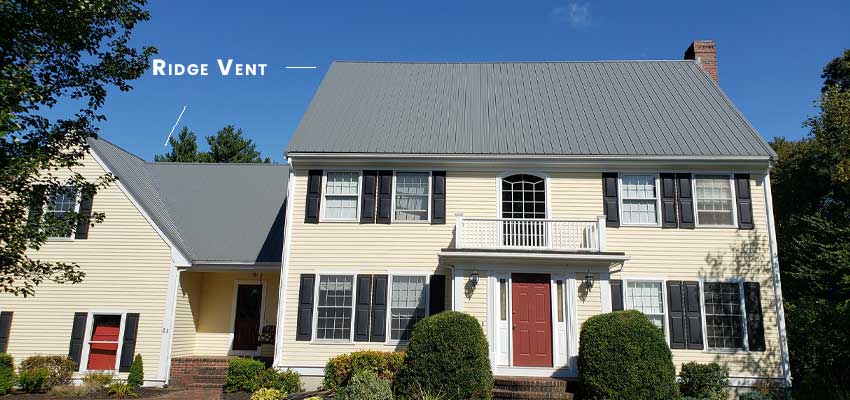Every roof needs well-balanced attic ventilation in order to function optimally. There are many ventilation products and systems out there to choose from so have a chat with your roofer in Hanover to learn about the intake and exhaust vents you need.
Let’s discuss why attic ventilation is so important for both your home and roof.
Roofing and Attic Ventilation: Products
There are many roof and attic ventilation products out there, with the most common being:
- Roof vents
- Gable vents
- Attic fans
- Louvers
They can fall under the following categories:
- Intake ventilation
- Exhaust ventilation
- Intake and exhaust
Why You Need Intake and Exhaust Vents
Every attic ventilation system must feature strategically-placed intake and exhaust vents because they:
- Remove moist, warm air
- Keep your attic drier
- Reduce condensation
- Allow pressurized heated air to escape so it doesn’t infiltrate your conditioned spaces
Having the proper amount of both types of ventilation systems is key. If they are unbalanced, you could experience problems with pressurization.
You may wonder: who cares about vents in the attic? Well, they’re actually quite important. Many areas of your roof deck are exposed to your attic, depending on your home’s architecture and the roof shape.
Without the proper balance of intake roof ventilation and exhaust roof ventilation, moisture will build up and lead to mold, mildew and structural damage to your roof.
Intake Vents
Intake vents basically draw air in from the outdoors. The fresh air streams into the attic to replace the air that left the exhaust vents. The result? Balanced airflow. Intake vents are usually located under the eaves of the roof.
The two kinds of intake vents are roof-mounted and soffit vents intake vents.
- Soffit Vents : These are the most popular type and they are found under the roof eaves.
- Roof Intake Vents : These are used when there are exposed rafters under the eaves or the absence of soffits, and often blend into the roofline.
Exhaust Vents
Exhaust vents keep the flow of air moving out of the attic to the outdoors. The two most common examples are attic fans and ridge vents, which run along the top of a roof where two sloping portions meet. They catch the wind that blows over the roof, helping to get rid of moisture and heated air.
Attic fans, found on one wall inside the attic, pulls air from the attic while venting it to the outside. This can help keep your whole house more comfortable while lowering your energy bills.
Roof Louvers
Placed flat on the roof, these allow air to escape the attic.
Wind or Roof Turbines
Featuring built-in blades or vanes, the wind turns these to create a spinning vacuum. That motion gets rid of hot, moist air from the attic.
Gable Vents
These act as both intake and exhaust vents, which will depend on wind direction and speed.
No matter which kind of ventilation system you have, the main thing to remember is that it must be balanced.
Contact Revered Roofing
Our roofers in Avon always make sure your attic has the proper ventilation when adding a new roof. To learn more about our process, contact our Hanson roofers at 781-536-4589 for a free quote and consultation.
Paul was easy going and a pleasure to deal with. No pressure. Crew got started late but the metal roof with new sky lights over our sun room was done in a day! Quality work. I recommend Revered Metal Roofing.

